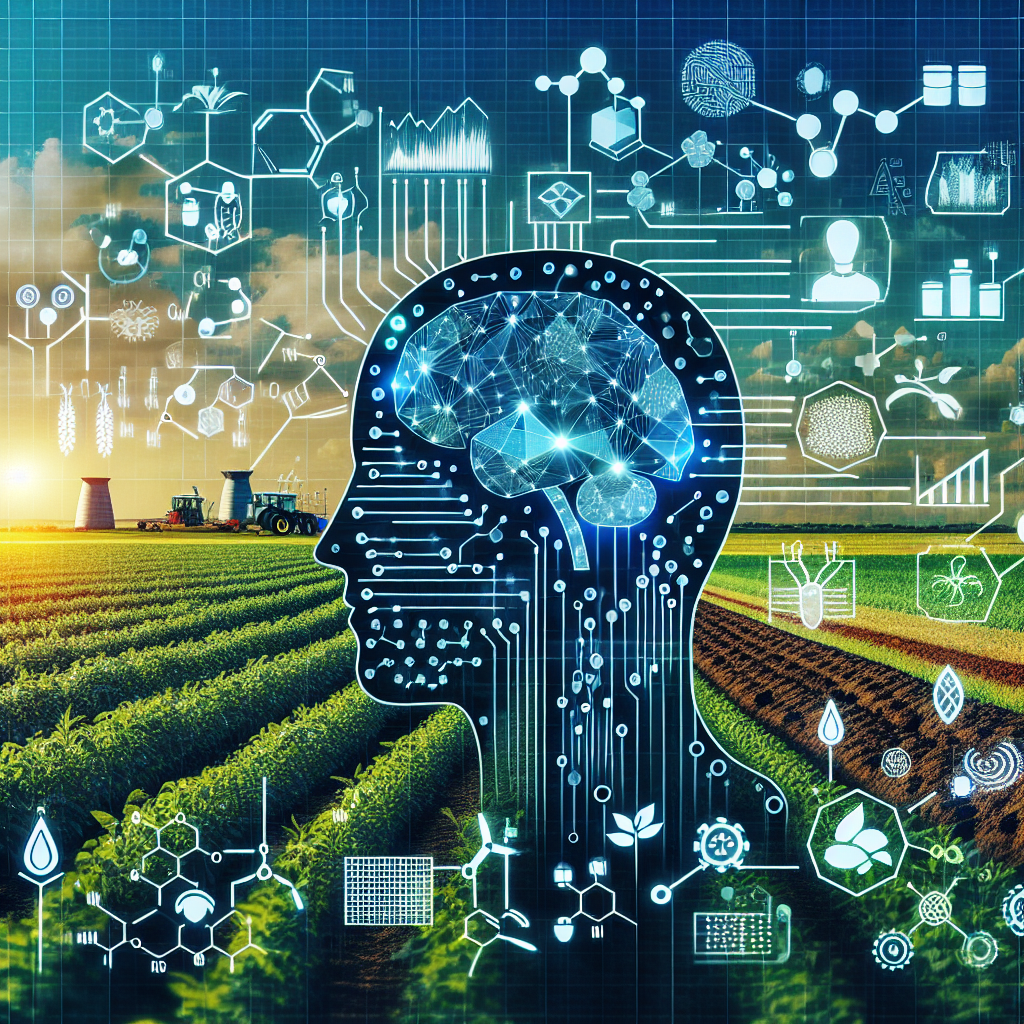Agriculture is a vital industry that provides food for the world’s population. However, the growing global population and changing climate patterns are putting pressure on farmers to produce more food with limited resources. Nutrient management is a critical aspect of agriculture that ensures plants receive the right amount of essential nutrients for optimal growth and productivity. Traditionally, farmers have relied on manual methods and intuition to manage nutrient applications, but with the advancement of technology, AI-driven solutions are revolutionizing nutrient management in agriculture.
AI-driven solutions use machine learning algorithms to analyze data and make informed decisions about nutrient applications. These solutions can help farmers optimize fertilizer use, reduce waste, and increase crop yields. By leveraging AI technology, farmers can make data-driven decisions that are tailored to their specific needs and conditions. In this article, we will explore how AI-driven solutions are transforming nutrient management in agriculture and the benefits they offer to farmers.
Benefits of AI-driven Solutions for Nutrient Management
1. Precision Agriculture: AI-driven solutions enable precision agriculture, where farmers can apply nutrients with precision based on the specific needs of each plant. By using sensors, drones, and other IoT devices to collect data on soil conditions, crop health, and weather patterns, AI algorithms can create personalized nutrient management plans for each field. This precision farming approach ensures that crops receive the right amount of nutrients at the right time, leading to improved crop yields and quality.
2. Increased Efficiency: AI-driven solutions streamline nutrient management practices by automating data collection, analysis, and decision-making processes. Farmers can save time and resources by using AI to monitor soil health, predict nutrient deficiencies, and recommend optimal fertilizer applications. This increased efficiency allows farmers to make timely adjustments to nutrient management practices, leading to better crop outcomes and resource utilization.
3. Environmental Sustainability: AI-driven solutions promote sustainable agriculture practices by optimizing nutrient use and minimizing environmental impact. By reducing overuse of fertilizers and chemicals, farmers can protect soil health, water quality, and biodiversity. AI algorithms can also help identify areas of nutrient runoff or leaching, allowing farmers to take corrective actions to prevent environmental pollution. By adopting AI-driven nutrient management solutions, farmers can contribute to a more sustainable and environmentally friendly agriculture sector.
4. Cost Savings: AI-driven solutions help farmers reduce input costs by optimizing nutrient applications and minimizing wastage. By using AI to analyze data on soil conditions, crop requirements, and weather patterns, farmers can make informed decisions about fertilizer use, leading to cost savings. By reducing the risk of over-fertilization or under-fertilization, farmers can maximize their crop yields and profitability. In the long run, AI-driven nutrient management solutions can help farmers improve their bottom line and achieve greater financial stability.
5. Real-time Monitoring: AI-driven solutions provide real-time monitoring of soil and crop conditions, allowing farmers to make immediate adjustments to nutrient management practices. By using sensors and IoT devices to collect data on soil moisture, nutrient levels, and plant health, farmers can track changes in real-time and respond proactively to emerging issues. This real-time monitoring capability enables farmers to optimize nutrient applications, minimize risks, and maximize crop productivity throughout the growing season.
FAQs
Q: What data is used by AI-driven solutions for nutrient management?
A: AI-driven solutions use a variety of data sources, including soil samples, weather data, crop health information, and historical yield data. By analyzing these data sources, AI algorithms can create personalized nutrient management plans for each field.
Q: How do AI-driven solutions optimize nutrient applications?
A: AI-driven solutions optimize nutrient applications by analyzing data on soil conditions, crop requirements, and weather patterns to determine the optimal amount and timing of fertilizer applications. By using machine learning algorithms, AI can create personalized nutrient management plans that are tailored to the specific needs of each crop.
Q: How can farmers benefit from using AI-driven solutions for nutrient management?
A: Farmers can benefit from using AI-driven solutions for nutrient management by improving crop yields, reducing input costs, and promoting environmental sustainability. By adopting AI technology, farmers can make data-driven decisions that lead to better outcomes and profitability.
Q: Are AI-driven solutions accessible to small-scale farmers?
A: Yes, AI-driven solutions for nutrient management are becoming more accessible to small-scale farmers through affordable technology solutions and partnerships with agricultural organizations. By leveraging AI technology, small-scale farmers can improve their nutrient management practices and achieve better crop outcomes.
Q: What are the challenges of implementing AI-driven solutions for nutrient management?
A: Some of the challenges of implementing AI-driven solutions for nutrient management include data quality issues, lack of technical expertise, and upfront costs. However, as AI technology becomes more widespread and affordable, these challenges are gradually being addressed, making it easier for farmers to adopt AI-driven nutrient management solutions.
In conclusion, AI-driven solutions are transforming nutrient management in agriculture by enabling precision farming, increasing efficiency, promoting environmental sustainability, and reducing costs. By leveraging AI technology, farmers can make data-driven decisions that optimize nutrient applications and improve crop outcomes. As AI technology continues to evolve, the future of nutrient management in agriculture looks promising, with AI-driven solutions playing a key role in driving innovation and sustainability in the sector.

